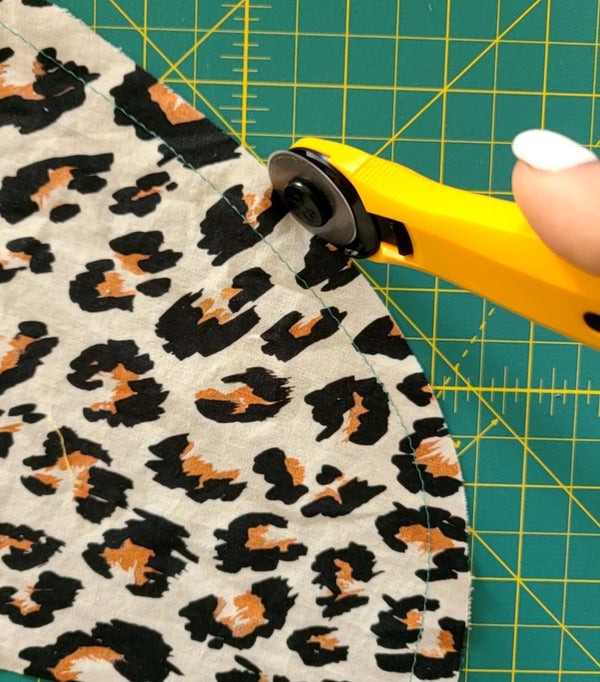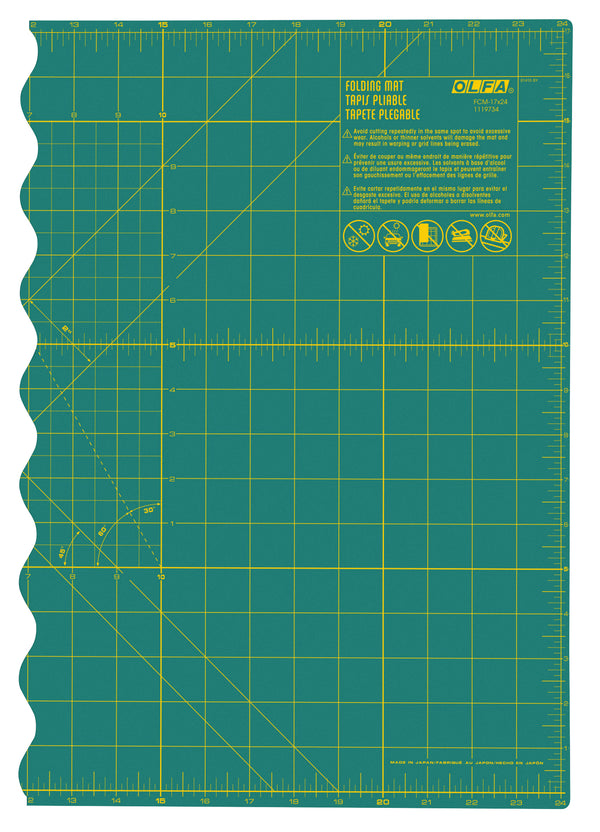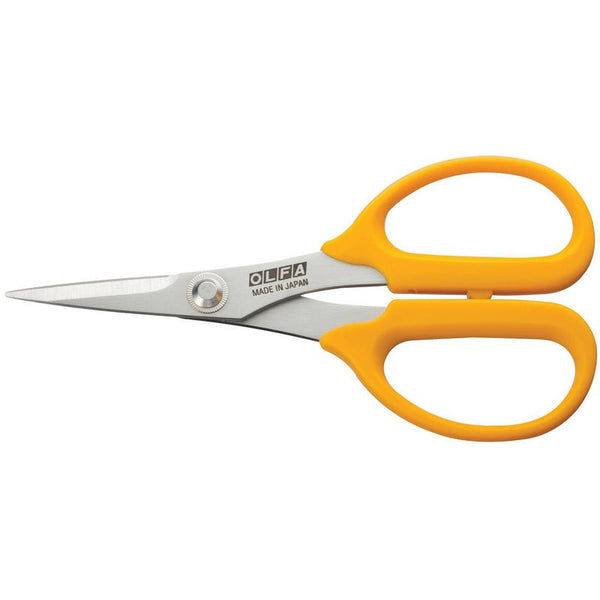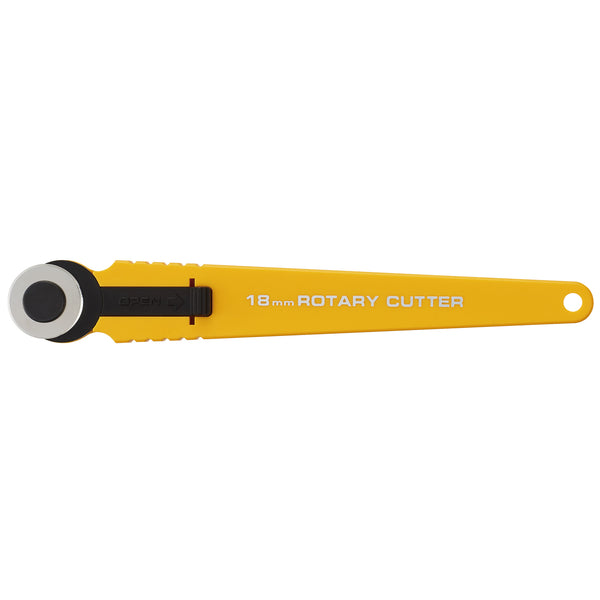
Stitches & Threads

Designer: Marcia Spencer
Instagram: @keechiibstyle
----------------------
OLFA Products used:
- OLFA FCM-17x24 17" X 24" Folding Cutting Mat
- OLFA 5-Inch SCS-4 Precision Appliqué Scissors
- OLFA 18mm RTY-4 Quick-Change Rotary Cutter
There are two basic stitches I think is important to get familiar with as a beginning sewist, and that's the Straight stitch and the Zig Zag stitch. All other stitches will form from the two and with adjustments to width, length and thread types you can just about sew anything.
The Straight Stitch
The basic straight stitch is the go to for sewing woven garments and some stretch garments. It is used for edge stitches, top stitches, under stitches and more. Normally its a shorter stitch, somewhere around 2.5 cm in length. However, you can adjust the length depending on the fabric you choose. With finer fabrics you want to choose a shorter length and with thicker fabrics you can choose to adjust the stitch length a bit. I like to stay with in 2.5 -3.5 if possible.
You can also use the shorter stitch for ease stitching which is used to create subtle shaping and provide ease of movement in sleeves and inseams. This allows for a comfortable fit.
Longer stitches are used for gathering stitches to create soft folds and shaping, and for basting stitches. Basting is used to hold fabric together temporarily. You can use it to match up plaids, on slippery fabrics, applying zippers. Where ever needed. It may also be helpful to use contrasting thread when basting or gathering so that its easier to see the stitches when you are ready to remove them.
Zig Zag Stitch
The zig zag stitch is often used for stitching stretch fabrics and applying elastic to armbands. I usually choose a shorter zig zag stitch when using this stitch on stretch fabrics and but for elastic attachment you want to use a longer length. You can choose a length that is compatible to the thickness of your fabric though. I find shorter stitches hold garment seams together and reduce puckering and broken stitches. Your regular cotton thread will do for most of stitches on stretch fabrics, however there are stretch threads available to increase the quality and durability of the stitch and garment.
The zig zag stitch can also be used for finishing garment seams, to prevent fraying. You can use a longer zig zag length for your seam finishings depending on the type of fabric you are using. Many sewing machines will provide overlook stitch options which are a combo of zig zag and straight stitches usually but simple zig zag can also get the job done.
A shorter zig zag stitch is used for bar tack stitches which are used to reinforce areas of stress in garments and lettuce edges, adding trims and applying appliques to garments. For lettuce edging you want to create a wave or lettuce edge effect to the hems of the stretch fabrics so the tighter shorter length is desired. When applying trims you may want to opt for a longer wider zig zag stitch however, appliques can be applied with shorter tighter stitches. There may already be a setting for a shorter zig zag stitch on your machine but if not you can adjust the stitching to a shorter length and width if needed to accommodate the type of fabric you are sewing. In most cases, lighter fabrics can tolerate shorter tighter stitches better than thicker fabrics.
Until Next Time!
Marcia













